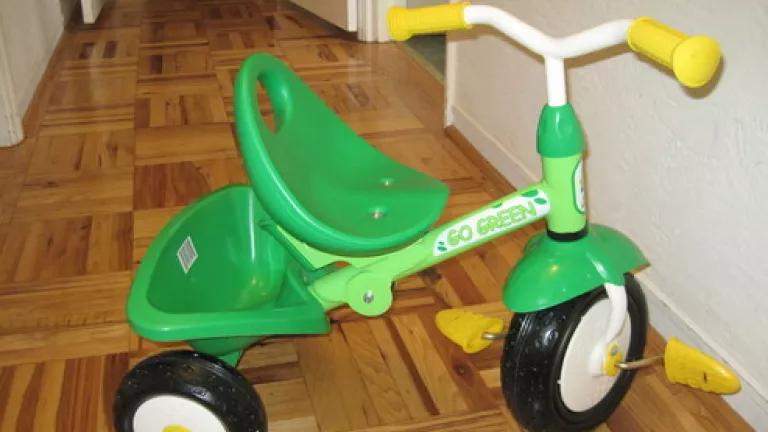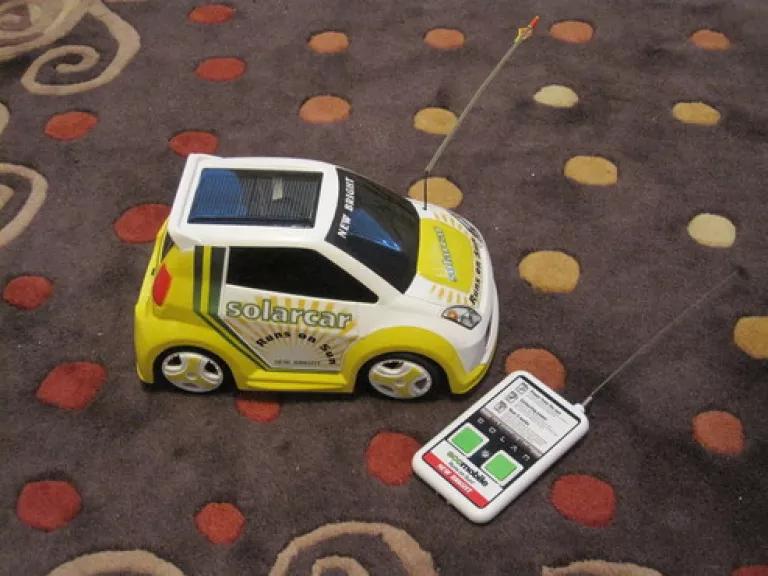
Working for an environmental organization I am accustomed to seeking out “green” products when shopping. This year I found several in unsuspecting places as I did my holiday shopping. Did you know you can buy a tricycle made of mostly recycled materials? We got one for my two year old.

There’s also this cool solar powered remote control car I got for my five year old. Anyone who has replaced the batteries on kids’ toys knows how liberating it is to have a great toy that doesn’t need batteries – ever! I found both of these at a major retailer. At many stores I find one section, albeit a small section, that offers environmentally friendly products that are either super efficient or are made out of recycled materials. There are cell phones made from old phone parts and recycled plastic, an idea that is long overdue given that most of us only keep our cell phones for a year or two. Even a recent visit to the eye doctor yielded a dozen choices of frames made from recycled material.
But what if consumers didn’t have to seek out environmentally preferred products? What if every product met a strong environmental performance standard? That day has come to California for one of our most central household products, the television. As my colleague Noah Horowitz wrote here and here, the California Energy Commission’s efficiency standards for new televisions mean that, starting in 2011, every television sold in California will be an efficient one. Conscientious California consumers won’t have to worry if their local Best Buy or Target stocks energy efficient TVs. The new TVs will be so efficient in fact, that once the standards are in full effect, California won’t need to build that new 500 megawatt power plant and will save almost $1 billion in the form of lower electricity bills.
The new TV standard doesn’t address every aspect of environmental performance; for example, there is no requirement for the TV to be easily disassembled for recycling. But for TVs, refrigerators, cell phone chargers and other products that meet energy efficiency standards, Californians don’t have to look for the one, usually tiny “green” section of the store to do their part for the Earth. And I’ll bet most people don’t know that their cell phone charger is regulated so that it doesn’t use inordinate amounts of power just by being plugged in to the wall. They just want it to charge their phone. That’s the great thing about efficiency standards. They nudge manufacturers to do better - to innovate so that their products use less energy with no tradeoff in performance or availability. Despite claims of “empty shelves” from the D.C. based Consumer Electronics Association, which has been fighting the TV efficiency standard for years, there are close to 300 models on the market today that meet the higher standard, known as the Tier 2 standard, three years before it goes into effect. For a list of the most efficient models on the market today go here.
My family is a bit behind the times when it comes to home entertainment. Case in point: we don’t have a digital TV or subscribe to cable so we needed a digital converter box when all broadcasting switched to digital last summer. But as my children grow up I can already anticipate repeated requests for a new flat screen television and a Wii or Xbox or whatever new game might come along. Video game consoles are due for development of energy efficiency standards because they consume excessive amounts of power when left on but are not in use. I’m proud that California keeps forging ahead with energy efficiency standards so that when we finally upgrade our TV or buy that new video game console, we will have a wide range of products to choose from and won’t have to seek out the little corner where they keep the efficient ones.